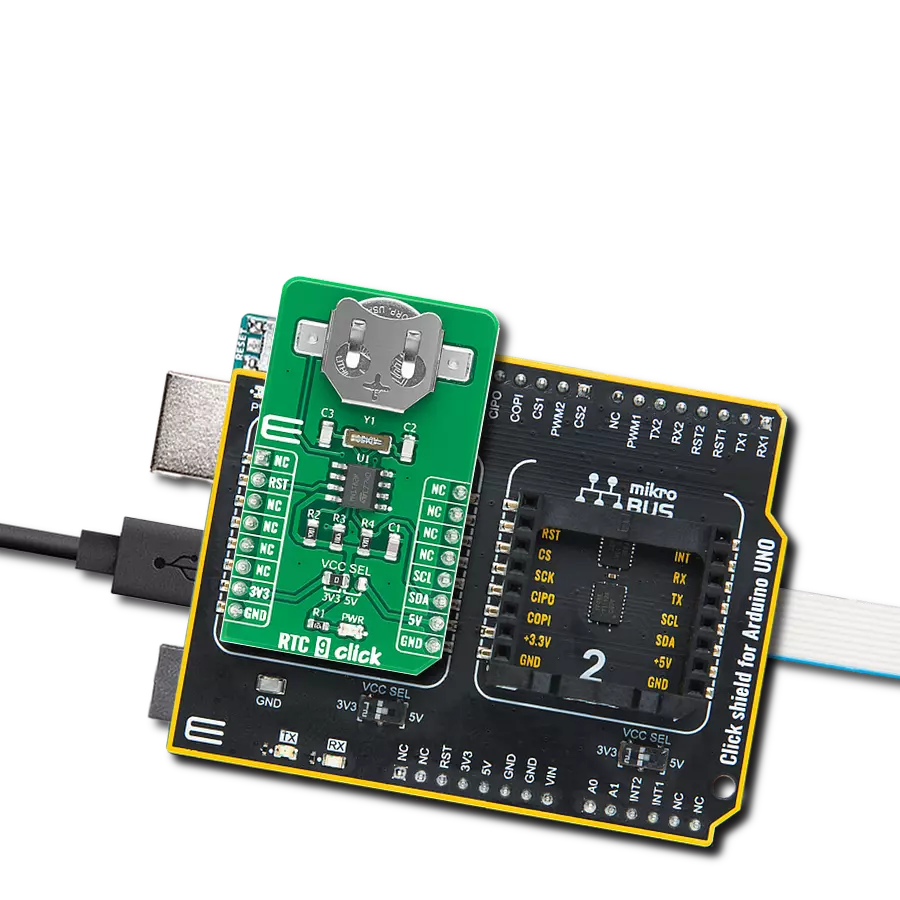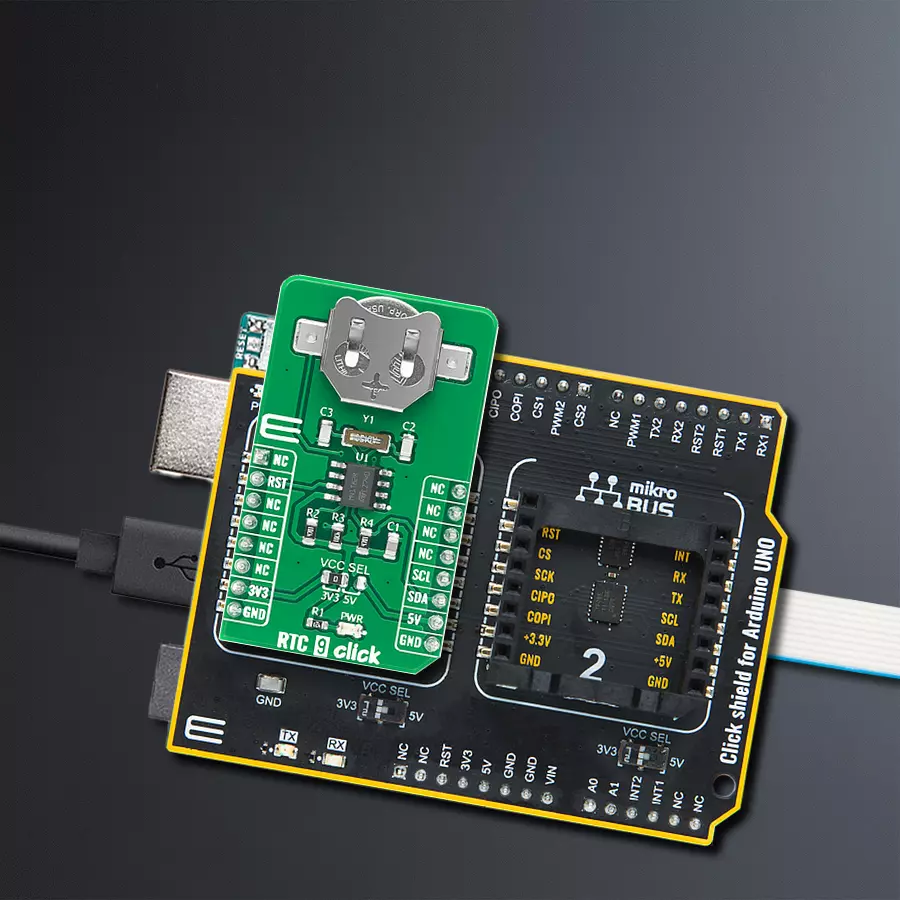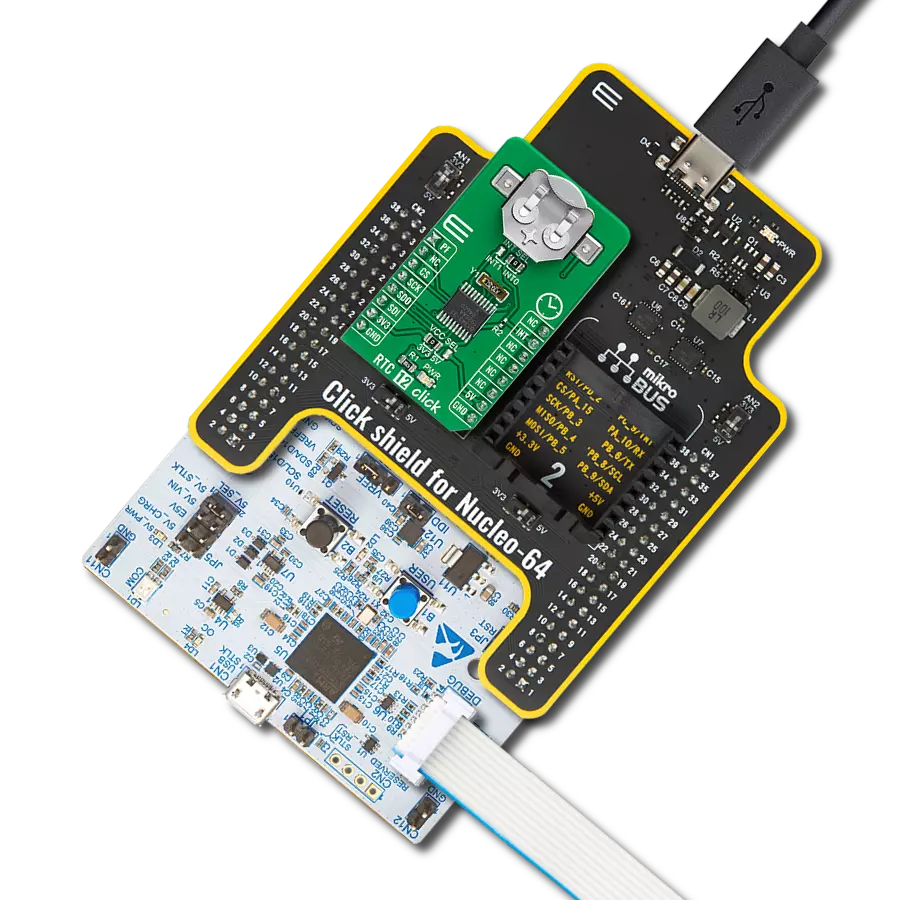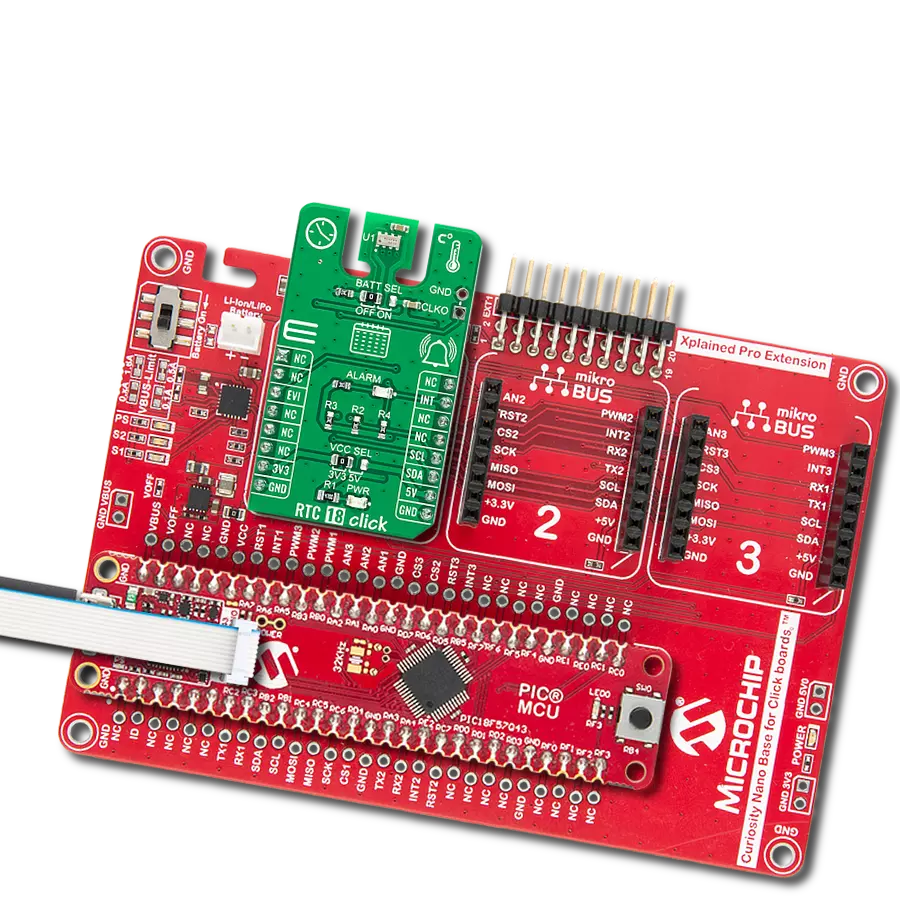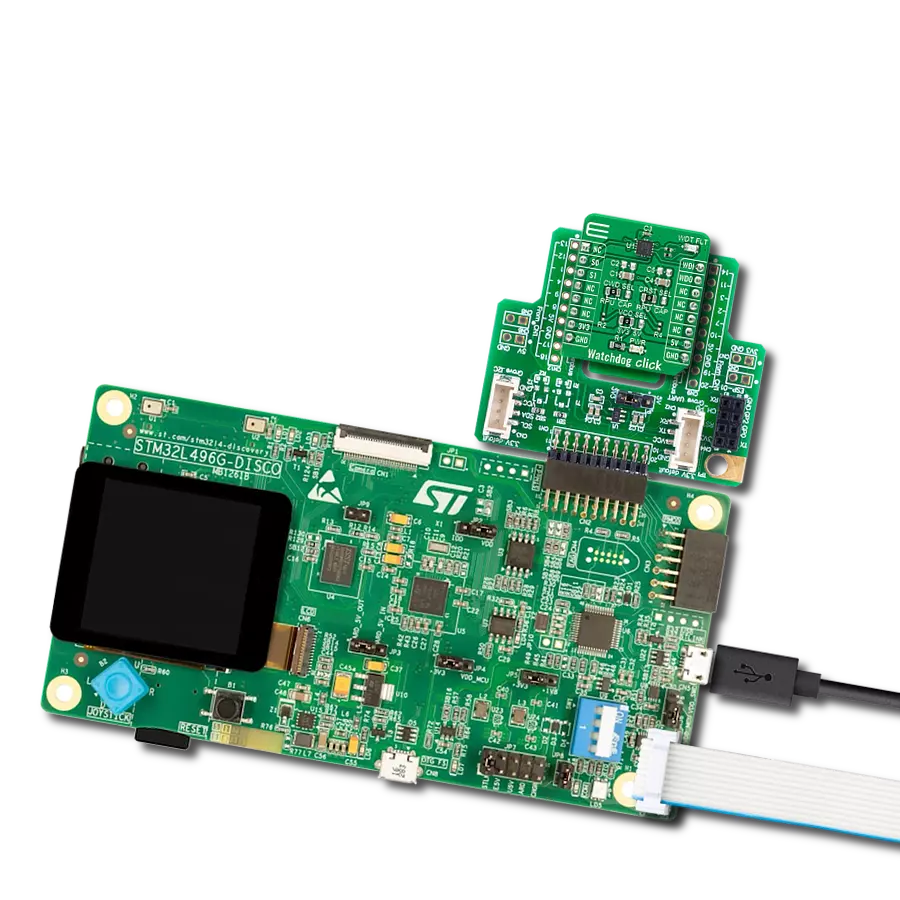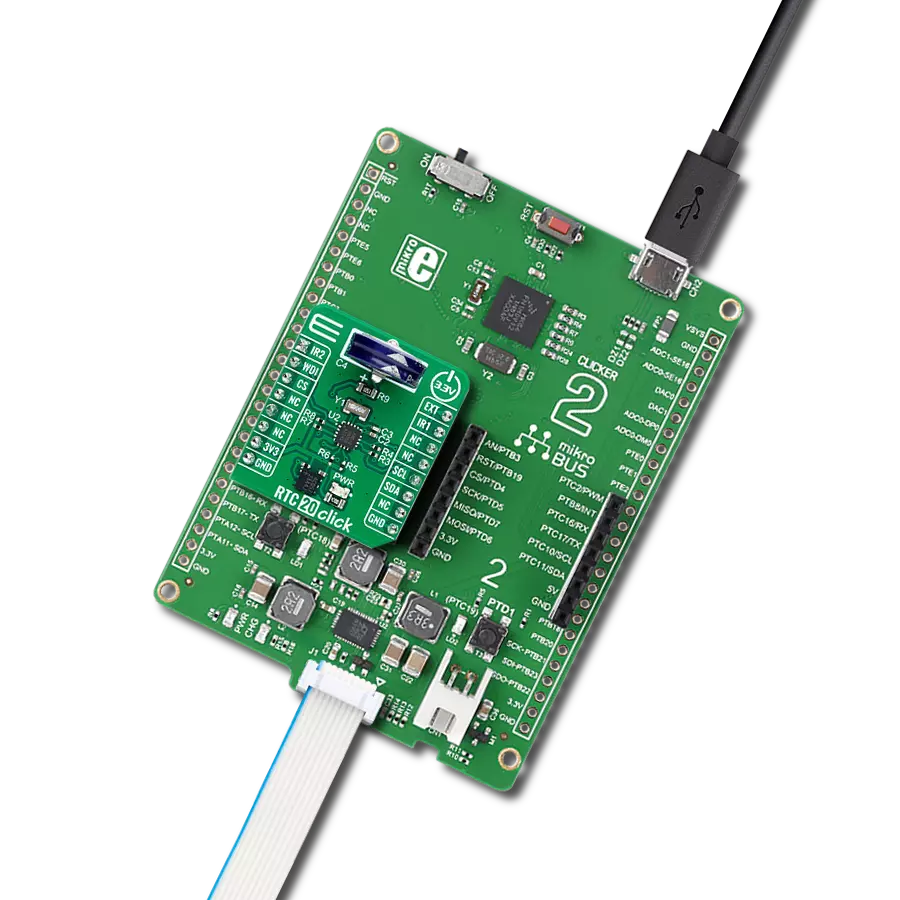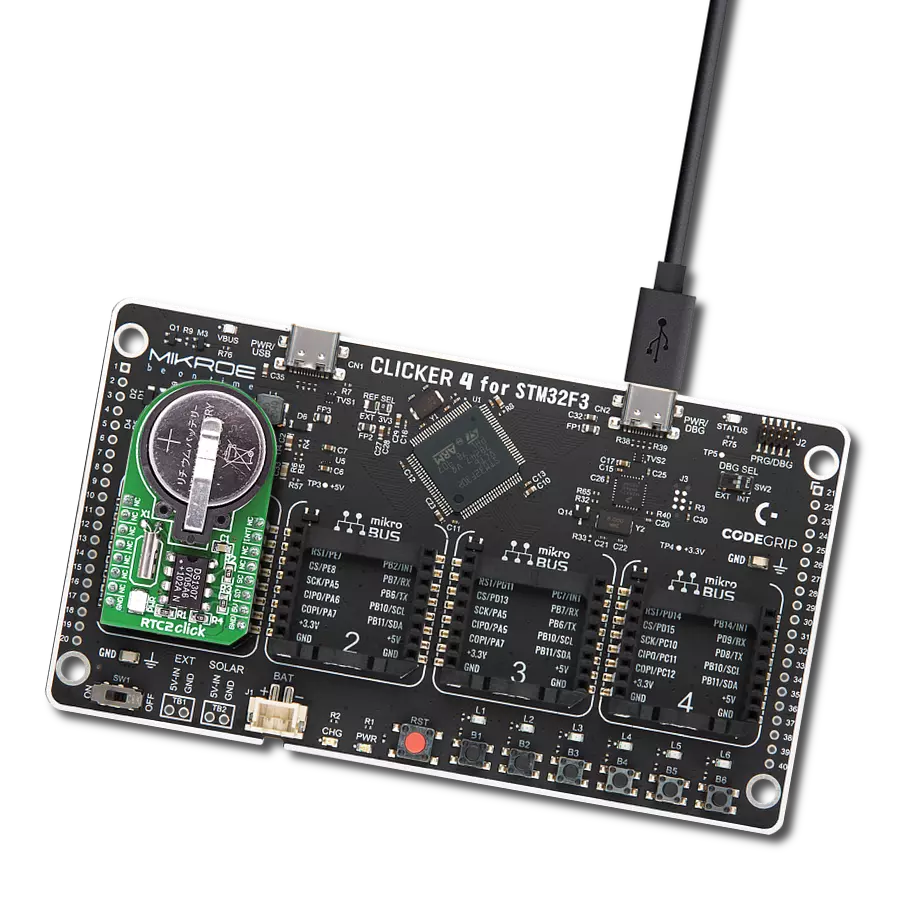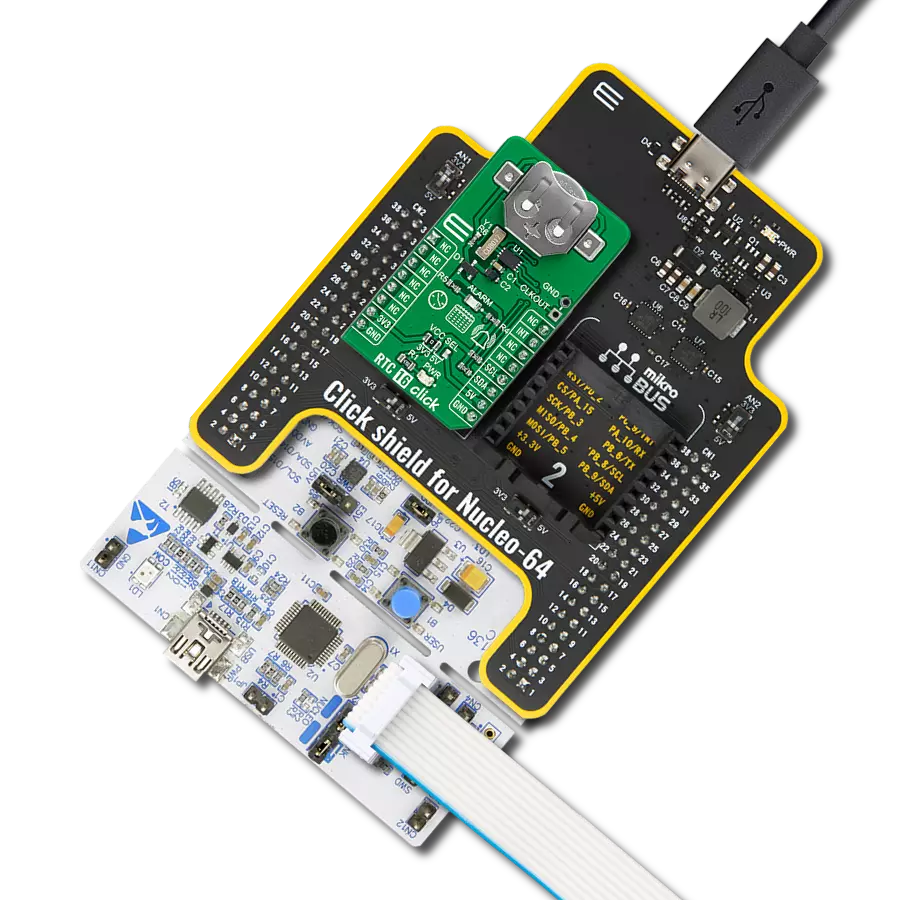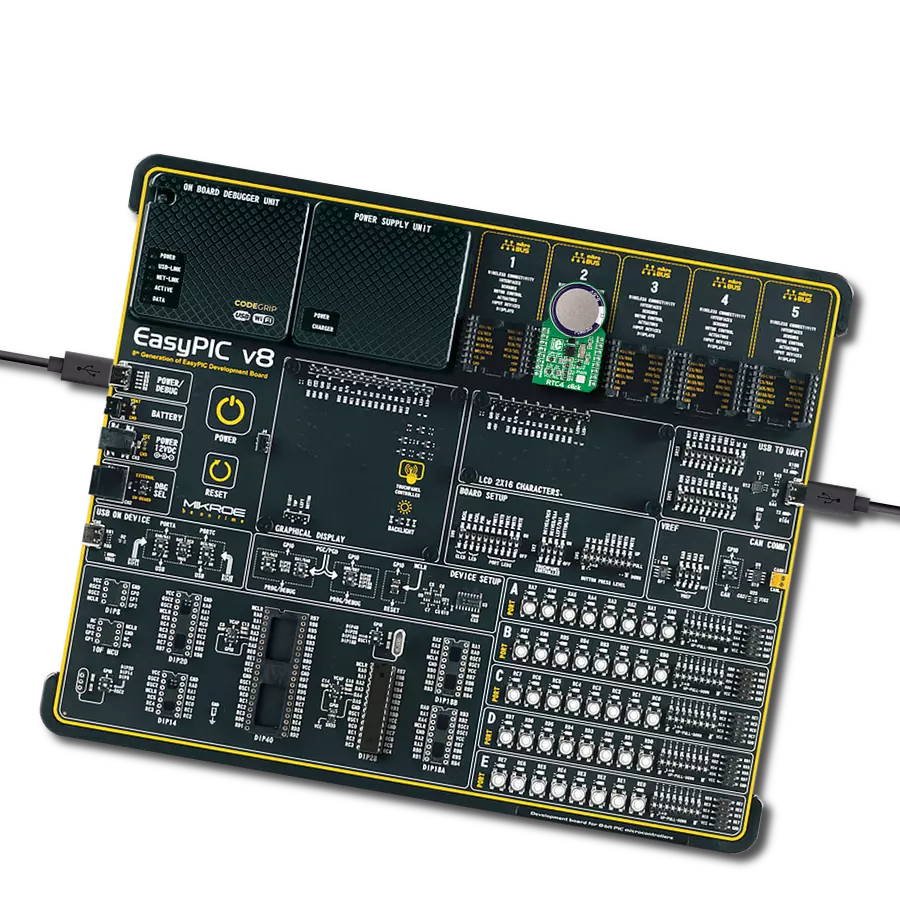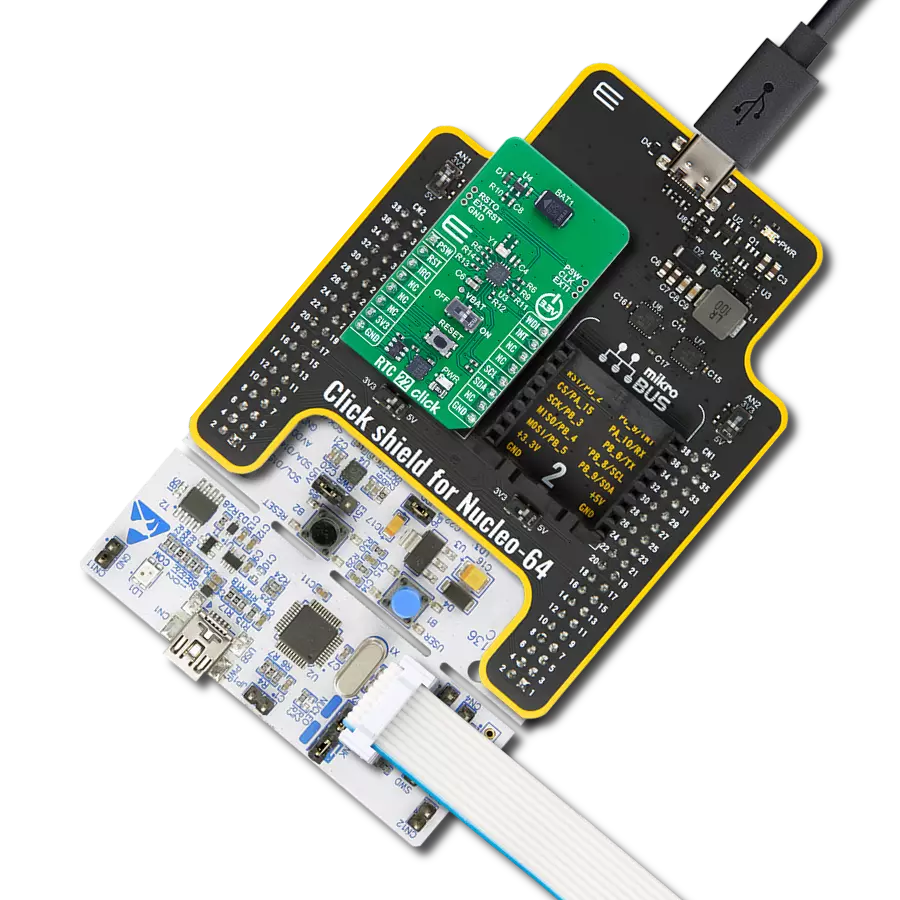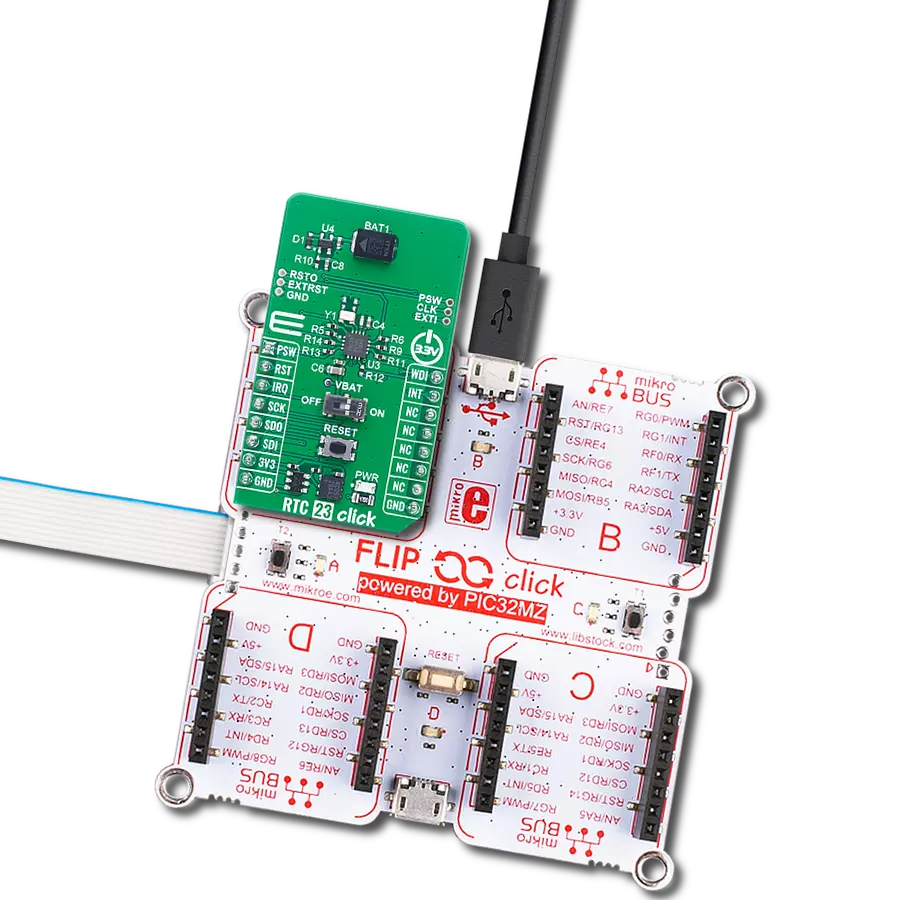Unlock precise timing control and synchronization capabilities to your solution with high-performance real-time clock solution
A
A
Hardware Overview
How does it work?
RTC 9 Click is based on the M41T82, an extreme low power real-time clock/calendar (RTC) module from STMicroelectronics. Thanks to its high integration level, this module provides high time accuracy, factory calibrated to ±5 ppm even after two reflows, with a very low count of external components required. It has a full RTC function, offering programmable counters, alarms, and an interrupt engine with selectable event reporting sources. The operational parameters are stored within the internal user SRAM memory, which is battery-backed, thus allowing their persistence in the event of the complete power failure. The M41T82 features a built-in 32.768 kHz oscillator.
However, RTC 9 click has an external oscillator too, in order to achieve the best accuracy possible. Eight bytes of the register map are used for the clock/calendar function and are configured in binary-coded decimal (BCD) format. An additional 17 bytes of the register map provide status/control of the two alarms, watchdog, 8-bit counter, and square wave functions. An additional seven bytes are made available as user SRAM. M41T82 supports the I2C communication interface, which is also used on the RTC 9 click for communicating with the main microcontroller through the mikroBUS socket. Functions available to the user include a non-volatile, time-of-day clock/calendar, two alarm
interrupts, watchdog timer, programmable 8-bit counter, and square wave outputs. The eight clock address locations contain the century, year, month, date, day, hour, minute, second, and tenths/hundredths of a second in 24-hour BCD format. Corrections for 28, 29 (leap year), 30, and 31 day months are made automatically. This Click board™ can operate with either 3.3V or 5V logic voltage levels selected via the VCC SEL jumper. This way, both 3.3V and 5V capable MCUs can use the communication lines properly. Also, this Click board™ comes equipped with a library containing easy-to-use functions and an example code that can be used for further development.
Features overview
Development board
Arduino UNO is a versatile microcontroller board built around the ATmega328P chip. It offers extensive connectivity options for various projects, featuring 14 digital input/output pins, six of which are PWM-capable, along with six analog inputs. Its core components include a 16MHz ceramic resonator, a USB connection, a power jack, an
ICSP header, and a reset button, providing everything necessary to power and program the board. The Uno is ready to go, whether connected to a computer via USB or powered by an AC-to-DC adapter or battery. As the first USB Arduino board, it serves as the benchmark for the Arduino platform, with "Uno" symbolizing its status as the
first in a series. This name choice, meaning "one" in Italian, commemorates the launch of Arduino Software (IDE) 1.0. Initially introduced alongside version 1.0 of the Arduino Software (IDE), the Uno has since become the foundational model for subsequent Arduino releases, embodying the platform's evolution.
Microcontroller Overview
MCU Card / MCU
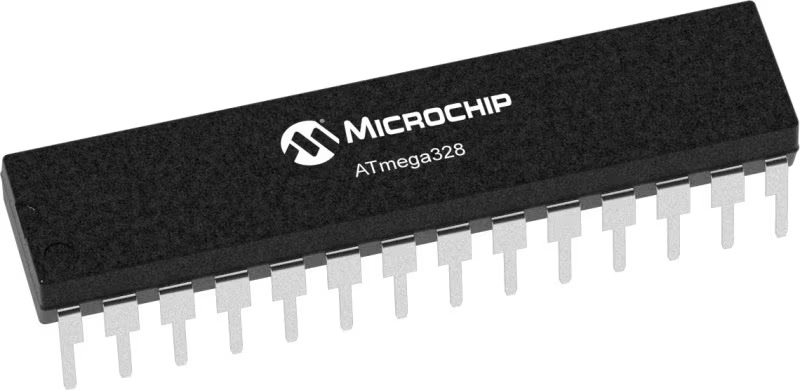
Architecture
AVR
MCU Memory (KB)
32
Silicon Vendor
Microchip
Pin count
32
RAM (Bytes)
2048
You complete me!
Accessories
Click Shield for Arduino UNO has two proprietary mikroBUS™ sockets, allowing all the Click board™ devices to be interfaced with the Arduino UNO board without effort. The Arduino Uno, a microcontroller board based on the ATmega328P, provides an affordable and flexible way for users to try out new concepts and build prototypes with the ATmega328P microcontroller from various combinations of performance, power consumption, and features. The Arduino Uno has 14 digital input/output pins (of which six can be used as PWM outputs), six analog inputs, a 16 MHz ceramic resonator (CSTCE16M0V53-R0), a USB connection, a power jack, an ICSP header, and reset button. Most of the ATmega328P microcontroller pins are brought to the IO pins on the left and right edge of the board, which are then connected to two existing mikroBUS™ sockets. This Click Shield also has several switches that perform functions such as selecting the logic levels of analog signals on mikroBUS™ sockets and selecting logic voltage levels of the mikroBUS™ sockets themselves. Besides, the user is offered the possibility of using any Click board™ with the help of existing bidirectional level-shifting voltage translators, regardless of whether the Click board™ operates at a 3.3V or 5V logic voltage level. Once you connect the Arduino UNO board with our Click Shield for Arduino UNO, you can access hundreds of Click boards™, working with 3.3V or 5V logic voltage levels.
Used MCU Pins
mikroBUS™ mapper
Take a closer look
Click board™ Schematic

Step by step
Project assembly
Software Support
Library Description
This library contains API for RTC 9 Click driver.
Key functions:
rtc9_set_time- Set new time - 24 hour formatrtc9_get_time- Get new time - 24 hour formatrtc9_get_date- Get new date
Open Source
Code example
The complete application code and a ready-to-use project are available through the NECTO Studio Package Manager for direct installation in the NECTO Studio. The application code can also be found on the MIKROE GitHub account.
/*!
* \file
* \brief Rtc9 Click example
*
* # Description
* This example demonstrates the use of RTC 9 Click board.
*
* The demo application is composed of two sections :
*
* ## Application Init
* Initializes the driver, wakes up the module, and sets the time and date.
*
* ## Application Task
* Reads the current time and date and displays the results on the USB UART each second.
*
* \author MikroE Team
*
*/
// ------------------------------------------------------------------- INCLUDES
#include "board.h"
#include "log.h"
#include "rtc9.h"
// ------------------------------------------------------------------ VARIABLES
static rtc9_t rtc9;
static log_t logger;
static uint8_t seconds_old = 0;
// ------------------------------------------------------ APPLICATION FUNCTIONS
void application_init ( void )
{
log_cfg_t log_cfg;
rtc9_cfg_t cfg;
rtc9_set_data_t set_data;
/**
* Logger initialization.
* Default baud rate: 115200
* Default log level: LOG_LEVEL_DEBUG
* @note If USB_UART_RX and USB_UART_TX
* are defined as HAL_PIN_NC, you will
* need to define them manually for log to work.
* See @b LOG_MAP_USB_UART macro definition for detailed explanation.
*/
LOG_MAP_USB_UART( log_cfg );
log_init( &logger, &log_cfg );
log_info( &logger, "---- Application Init ----" );
// Click initialization.
rtc9_cfg_setup( &cfg );
RTC9_MAP_MIKROBUS( cfg, MIKROBUS_1 );
rtc9_init( &rtc9, &cfg );
Delay_ms ( 500 );
rtc9_wakeup( &rtc9 );
rtc9_set_time( &rtc9, 23, 59, 50 );
set_data.day = 22;
set_data.day_of_week = RTC9_DAY_MONDAY;
set_data.month = RTC9_MONTH_MARCH;
set_data.year = 21;
rtc9_set_date ( &rtc9, &set_data );
rtc9_wakeup( &rtc9 );
}
void application_task ( void )
{
rtc9_get_time_t get_time;
rtc9_get_date_t get_date;
char *week_string;
char *month_string;
rtc9_get_time( &rtc9, &get_time );
rtc9_get_date( &rtc9, &get_date );
if ( get_time.sec != seconds_old )
{
seconds_old = get_time.sec;
log_printf( &logger, "- Time [ %.2u:%.2u:%.2u ] \r\n", ( uint16_t ) get_time.hour,
( uint16_t ) get_time.min,
( uint16_t ) get_time.sec );
week_string = rtc9_current_day_of_week( get_date.day_of_week );
month_string = rtc9_current_month( get_date.month );
log_printf( &logger, "- Date [ %s, %s %.2u, %u ] \r\n", week_string, month_string,
( uint16_t ) get_date.day,
( uint16_t ) get_date.year + 2000 );
log_printf( &logger, "---------------------------------------- \r\n" );
}
Delay_ms ( 10 );
}
int main ( void )
{
/* Do not remove this line or clock might not be set correctly. */
#ifdef PREINIT_SUPPORTED
preinit();
#endif
application_init( );
for ( ; ; )
{
application_task( );
}
return 0;
}
// ------------------------------------------------------------------------ END
Additional Support
Resources
Category:RTC
